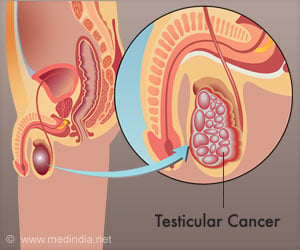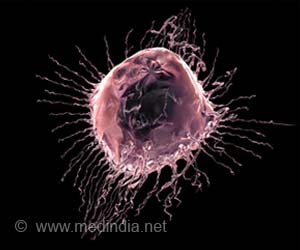A team of Italian researchers have conducted experiments on mice and suggested that in lung cancer treatment, inhibiting nicotine receptors may help double survival time.
A team of Italian researchers have conducted experiments on mice and suggested that in lung cancer treatment, inhibiting nicotine receptors may help double survival time.
Writing about their work in the American Journal of Respiratory and Critical Care Medicine, the researchers point out that changes in genes encoding nicotine receptors are strongly associated not only with the tendency to smoke, but with susceptibility to lung cancer.They say that nicotine exposure also heightens the expression of the nicotine receptors, which leads to increased cell proliferation and inhibition of apoptosis, further setting the stage for cancer.
Previous studies have shown that an antagonist of nicotine acetylcholine receptors (nAChRs), called d-tubocurarine/a-Cobratoxin (a-CbT), may serve as an anticancer agent because it specifically targeted the a7 subunit of nAChRs, the area primarily associated with increased cell proliferation.
The current study went a step further and showed that a-CbT could inhibit non-small cell lung carcinoma (NSCLC) growth and prolong life in non-obese/severe combined immunodeficient (NOD/SCID) mice that had human NSCLC grafted to their lungs.
The study attempted to mimic human cancer conditions more closely by delaying treatment until the tumors were well-established.
Besides controlling mice that were untreated, the researchers randomized one third of the mice to receive standard chemotherapy.
Advertisement
"The results of this study show that a-CbT, a powerful, high-affinity a-7-nAChR inhibitor, induces antitumor activity against NSCLC by triggering apoptosis. The prolonged survival of a-CbT-treated animals in our mouse model of NSCLC is most likely the result of several mechanisms, including various antiproliferative and antiangiogenic effects," wrote Dr. Patrizia Russo, of the Lung Cancer Unit of the National Cancer Research Institute in Genoa, Italy.
Advertisement
They believe that this finding may be due to the reduced number of receptor binding sites on normal cells as opposed to cancerous cells. Conversely, they reported that cancer cells with the greatest number of receptor binding sites seemed to respond with the greatest sensitivity to the treatment.
"The goal of this research line is to explore the widest range of possibilities of intervention on the? a7-nAChRs. We hope to move further on towards the clinical setting experimentation phase for the assessment of potentially new treatment strategies for NSCLC," said Dr. Russo.
Source-ANI
ARU














